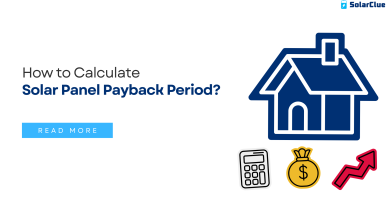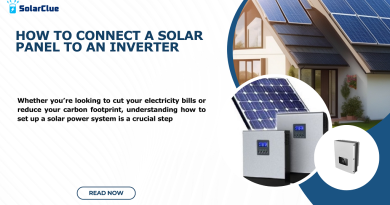Benefits of Using MPPT Solar Inverters for Your Home or Business
If you are looking into going solar for your home or business? It’s a Smart move! Taking the power of the sun is one of the best ways to reduce your carbon footprint and save money on energy bills in the long run. solar power has become an increasingly popular choice for residential and commercial applications. One Important component in a solar power system is the inverter, which converts the direct current (DC) generated by solar panels into alternating current (AC) that can be used to power homes and businesses. Among the various types of inverters available, MPPT (Maximum Power Point Tracking) solar inverters offer significant advantages, making them a preferred choice for many solar installations.
Table of Contents
What is an MPPT Solar Inverter?
MPPT stands for “maximum power point tracking.” Essentially, an MPPT solar inverter is a device that helps ensure your solar panels are operating at high efficiency by constantly adjusting their voltage to get the most power output possible based on the available sunlight conditions.
An MPPT solar inverter is a specialized type of inverter designed to maximize the energy output from solar panels. It achieves this by continuously adjusting the operating voltage of the solar panels to ensure they are operating at their maximum power point, which is the optimal voltage and current combination for maximum energy production.
How Does an MPPT Solar Inverter Work?
The MPPT solar inverter contains advanced electronics that constantly monitor the output of your solar panels and adjust the voltage up or down to keep them operating at the ideal voltage for maximum power generation. It’s like having a tiny computer brain optimizing your system’s efficiency every second of the day.
By ensuring your solar panels are always operating at their maximum power point, MPPT inverters help you get the most benefits from your solar installation. In simple terms, you’ll generate more electricity from the same setup compared to a non-MPPT system.
Uses of MPPT Solar Inverters
MPPT solar inverters are widely used in various solar power applications, including:
1. Residential solar systems
2. Commercial and industrial solar installations
3. Off-grid solar systems (e.g., remote cabins, telecommunication towers)
4. Solar-powered water pumping systems
5. Grid-tied solar systems
MPPT solar inverters are commonly used in both residential and commercial solar photovoltaic (PV) systems. Whether you’re powering your home, a business, or even an off-grid application like an RV or remote cabin, an MPPT inverter can help maximize the electricity generation of your Solar Panel.
They are especially useful in situations where shading is a factor, as they can optimize each panel or string of panels individually to overcome partial shading issues that would otherwise reduce output in a non-MPPT system.
Benefits of MPPT Solar Inverters :
Now that you understand what they are and how they work, let’s look at some of the key benefits of using an MPPT solar inverter:
1.Increased Energy Yield
This is the big one – by always operating at maximum efficiency, MPPT inverters can increase the overall energy yield from your solar PV system by up to 30% compared to a non-MPPT setup. That’s like getting a bunch of extra free panels!
2.Flexible System Design
MPPT inverters allow for more flexibility in solar panel layout and orientation. You don’t need to position all panels to face exactly the same direction or receive sunlight at the same angle.
3.Reduced Shading Losses
As mentioned, MPPT can help reduce the effects of partial shading on your system by optimizing the output of individual panels or strings. This can be very beneficial for locations with hurdle like trees or buildings.
4.More Efficient Use of Roof Space
MPPT allows panels to be positioned in different orientations, so you can use available roof space more effectively without needing perfect alignment for everything.
5.Remote Monitoring and Maximum Uptime
Many modern MPPT inverters come with remote monitoring capabilities, allowing you to keep an eye on system performance and identify any issues quickly to maximize uptime.
Conclusion :
if you want to get the most out of your solar panel system. By constantly adjusting to find that “Maximum Power Point,” they ensure your setup is always operating at high efficiency.
Is an MPPT inverter strictly necessary? No, you can still generate solar power without one. But if you’re looking to maximize your long-term savings and get the absolute most from your solar installation, an MPPT inverter is absolutely worth the added upfront cost.
So as you’re exploring solar options for your home or business, be sure to look for solar packages that include MPPT inverter technology. Your future energy-independent self will thank you.
Visit SolarClue® to see the Best MPPT Solar Inverters. SolarClue® actively sells solar energy products at discounts of up to 50% on its online marketplace.
Frequently Asked Questions :
1.What are the benefits of MPPT solar inverter?
MPPT inverters can also improve the performance of a solar power system in low light conditions. By tracking the MPPT, the inverter can still extract the maximum amount of power from the panels even when they are not receiving full sunlight.
2.What is the main purpose of MPPT?
MPPT stands for Maximum Power Point Tracking, a technique to regulate the charge of your battery bank.
3.What are the disadvantages of MPPT solar charge controller?
The main drawback of MPPT charge controllers is that they are more expensive and complex than PWM charge controllers.
4.Does MPPT charge faster?
MPPT controllers can convert more solar power into usable electricity, resulting in increased energy output and overall system performance.




